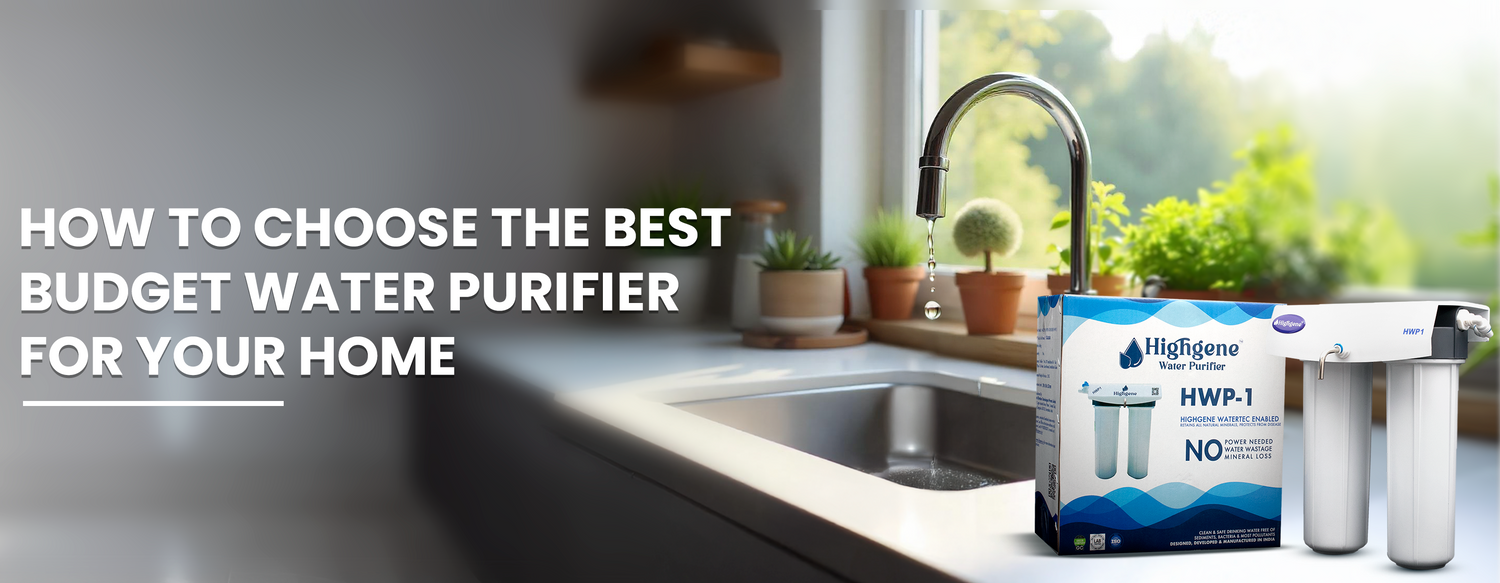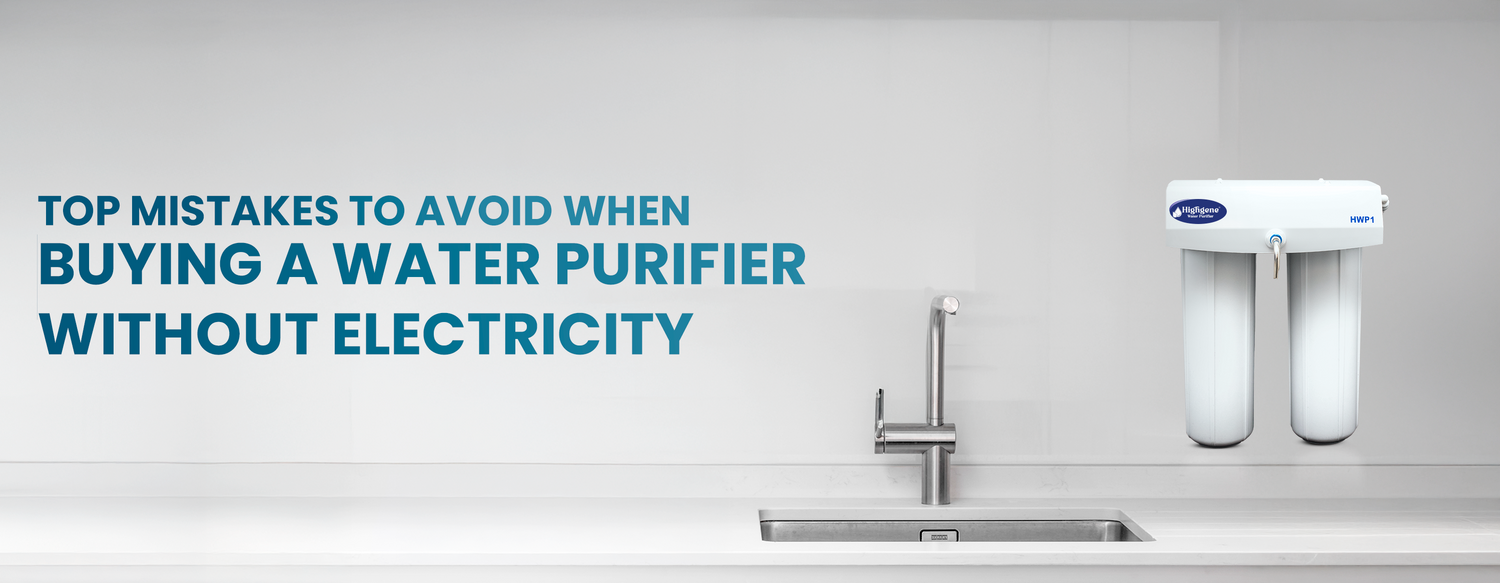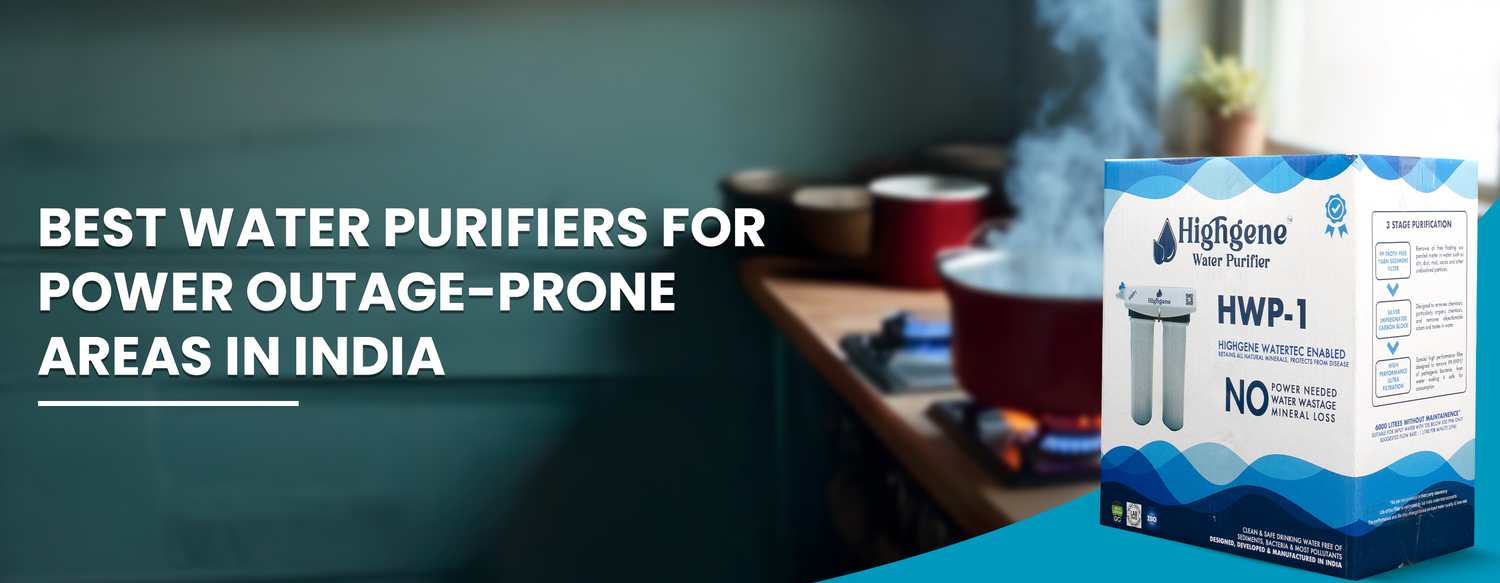The Critical Need for Water Purification
Choosing the right water purifier is essential for every home in a country like India, where variations in water quality are significant from region to region.
Even after treatment, water from municipal sources often becomes contaminated due to distribution via outdated pipes. And the chemical treatment of water can add further contaminants. Microbiological impurities, agricultural runoff, and heavy metals can contaminate groundwater supplies. Serious health problems, from gastrointestinal disorders to chronic heavy metal poisoning, could result from these contaminations.
Learning about Water Purification Technologies
There are several technologies out in the market currently. But knowing what distinguishes them, drawing a comparison between each one's offering based upon your particular requirement will make you able to form an informed decision about your and your family's well-being. In this article, we're primarily going to talk about Reverse Osmosis (RO), Ultraviolet (UV), and Ultrafiltration (UF).
-
Reverse Osmosis (RO)
RO technology is based on an advanced principle where water is pushed through a semipermeable membrane with an extremely tiny pore size of 0.0001µm. This membrane stops nearly all dissolved salts, heavy metals, bacteria, viruses, and even microplastics.
RO purifiers are best suited for water with high TDS (Total Dissolved Solids) levels above 500 PPM and are thus suitable for borewells or brackish water sources. They perform well in removing chemicals like chlorine, pesticides, and heavy metals that are present in agricultural or industrial areas.
However, RO systems also have some limitations. They generate wastewater – generally, 2-4 gallons of wasted water per gallon of water filtered. Also, as the membrane is very fine it blocks beneficial minerals as well, along with harmful ones, and often remineralization add-ons are needed to improve water quality. They are powered by electricity and need routine maintenance with filter replacement every 6-12 months and membrane replacement every 2-3 years.
-
Ultraviolet (UV) Purification
UV purification is different in that it employs a UV lamp. Water flowing through a special chamber is subjected to ultraviolet light of about 254nm wavelength. The light kills the DNA and RNA of microbes such as bacteria, viruses, and protozoa and stops them from multiplying further or causing disease.
UV systems work best with water of low TDS levels, since high mineral concentrations can shield the microorganisms from the exposure of UV-rays. UV purifiers are excellent to use when you know that there are biological contaminants in water sources, e.g., well water or flood water.
The largest advantage of UV purification is that it keeps all of the natural minerals present in the water. It only disinfects microbiological contamination; however, dissolved solids, heavy metals, and chemicals are not impacted. UV purifiers also require electricity and a constant water flow rate for proper disinfection.
-
Ultrafiltration (UF)
The popularity of non electric water purifiers in India has been increasing widely, which has brought ultrafiltration technology to the center stage. UF systems employ hollow fiber membranes with pore sizes between 0.01 and 0.1µm, permitting the water to pass through and blocking larger particles and microorganisms.
UF technology is best applied to water with a lower content of TDS (500 PPM or less) and areas that experience biological contamination problems. The UF systems have one of the strongest advantages in that they do not need electricity to function, making them perfect for areas with frequent power outages. They produce zero wastewater, adding to the water-saving effort.
For price-conscious individuals looking for a budget water purifier, a non electric water purifier based on UF technology is an efficient solution that requires minimal maintenance, typically only replacing filters every 6-12 months.
Comparative Analysis of Purification Technologies
|
Feature |
RO |
UV |
UF |
|
Pore Size |
0.0001µm |
N/A |
0.01-0.1µm |
|
Electricity Required |
Yes |
Yes |
No |
|
Water Wastage |
High (2-4 gallons per gallon purified) |
None |
None |
|
Mineral Retention |
Removes minerals |
Preserves minerals |
Preserves minerals |
|
Ideal TDS Level |
>500 PPM |
Low TDS |
<500 PPM |
|
Maintenance Frequency |
High (6-12 months for filters, 2-3 years for membrane) |
Medium (UV lamp replacement) |
Low (6-12 months for filters) |
|
Removes Bacteria/Viruses |
Yes |
Yes |
Yes |
|
Removes Heavy Metals |
Yes |
No |
Partial |
|
Removes Chemicals |
Yes |
No |
Partial |
|
Initial Cost |
High |
Medium |
Low |
|
Operating Cost |
High |
Medium |
Low |
Introducing the Highgene Water Purifier (HWP-1)
For families that need an effective and eco-friendly purifying solution, the Highgene Water Purifier (HWP-1) stands out as the epitome of UF technology. This non electric water purifier employs a comprehensive 3-stage cleaning process:
-
Yarn Wound Sedimentation: Traps particles greater than 5 microns
-
Activated Carbon Block: Eliminates chlorine, unpleasant taste, odours, and some chemicals
-
Ultrafiltration: Removes bacteria, viruses, and other microbes
The HWP-1 leads in the budget water purifier segment with its blend of performance and eco-friendliness. It requires no electricity, generates no wastewater, is low-maintenance and maintains vital minerals in your drinking water. Its space-saving design is simple to install even in smaller kitchens, and its efficiency in purifying water with TDS levels below 500 PPM makes it well-suited to most municipal water supplies in India..
Choosing the Right Technology for Your Home
Your decision to use RO, UV, or UF technology should be based on your local water quality and the TDS level. In case of high TDS water (more than 500 PPM) or heavy metal-contaminated water, even though RO has its demerits, it may be indispensable. In the case of water with TDS levels less than 500 but microbiological problems, UV or UF technologies provide more effective options.
For the majority of homes using municipal water with average TDS levels, a non electric water purifier with UF technology, such as the Highgene Water Purifier, offers the ideal combination of effective filtration, mineral preservation, and eco-friendliness without the recurring expense of electricity and wasted water.
Keep in mind that good-tasting water is only part of the picture – it's about safeguarding your family's health for generations to come. Select wisely based on your particular water quality requirements and not on marketing hype.





